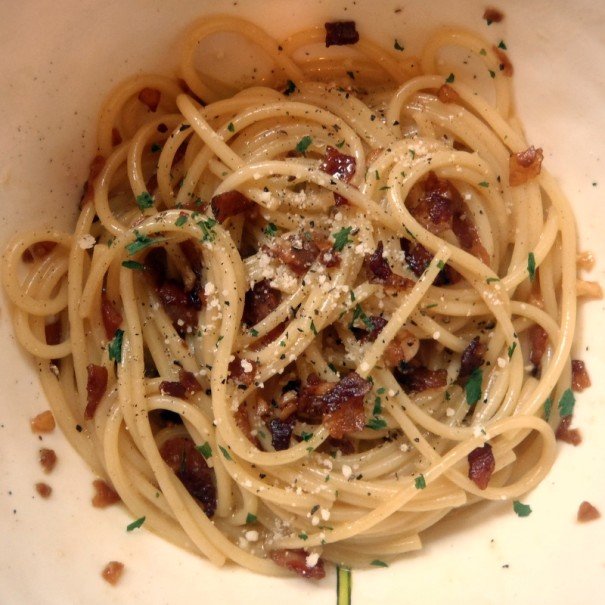
Morning Noodle Eaters of the World, Unite!

Morning Noodle Eaters of the World, Unite!
Spaghetti in Haiti
The first time I saw people eating spaghetti for breakfast in Haiti, I assumed they were leftovers. At around 8 a.m., I saw a woman on a stoop in Jacmel, in the country’s south, with a paper plate of the noodles on her lap. I’m a big fan of spaghetti and have eaten it, I had thought, in almost every circumstance, including on the street, but never as leftovers for breakfast. A minute or so later, I turned onto a market street packed tightly with people selling corn and coal and $5 phones, and on almost every lap was a plate of spaghetti. There was spaghetti with tomato sauce, with cut-up hot dogs, or with butter.
For about the last 20 years, by local estimates, spaghetti has been a staple Haitian breakfast food. And the more I looked and sniffed about, the more variations I found, including the use of ketchup instead of tomato sauce and the occasional addition of dried fish. There are recipes for “Haitian spaghetti” online, but they’re mostly nonsense, and read like recipes for cereal; it’s just spaghetti, cooked the usual way and tossed with whatever’s around.
There are a couple of ways to look at these spaghetti breakfasts, called espageti in Creole. An especially cursory one would point to how cheap it is—one of the cheapest things you can buy in a Haitian grocery store—take into account Haiti’s poverty, and leave it at that. However, you could also zoom out a bit, and see it as the result of the fundamental disruptions at work in Haiti over the past several decades. As foreign aid organizations—both governmental and non—have become ever more aggressive in their attempts to help, they have wreaked havoc on any number of Haitian traditions, many of them culinary.
But you could also be a little less geopolitical about it all, and see the roots of all culinary traditions in local exigency of one sort or another—seasonal, religious, agricultural, economic. Then you could welcome Haiti into the greater world of morning noodle eaters, which includes much of East and Southeast Asia and the Gulf states (with balaleet, their angel hair, butter, saffron and cardamom breakfast). It’s easy, fast, has an infinite shelf life, reheats well, and provides a rush of carb-converted energy for a morning’s work.
I tried it on a lark at my hotel’s breakfast buffet on the country’s beachy Cote des Arcadins, and within a couple of days had given up eggs, bread, and cereal entirely in favor of heaping plates of spaghetti. A little like banh mi, this is less culinary innovation and more cultural appropriation and re-purposing, a sign—much like American pizza, German doner kebabs or Marco Polo’s Italian noodles, for that matter—of the globalization of food.
Photo Credit: Joy